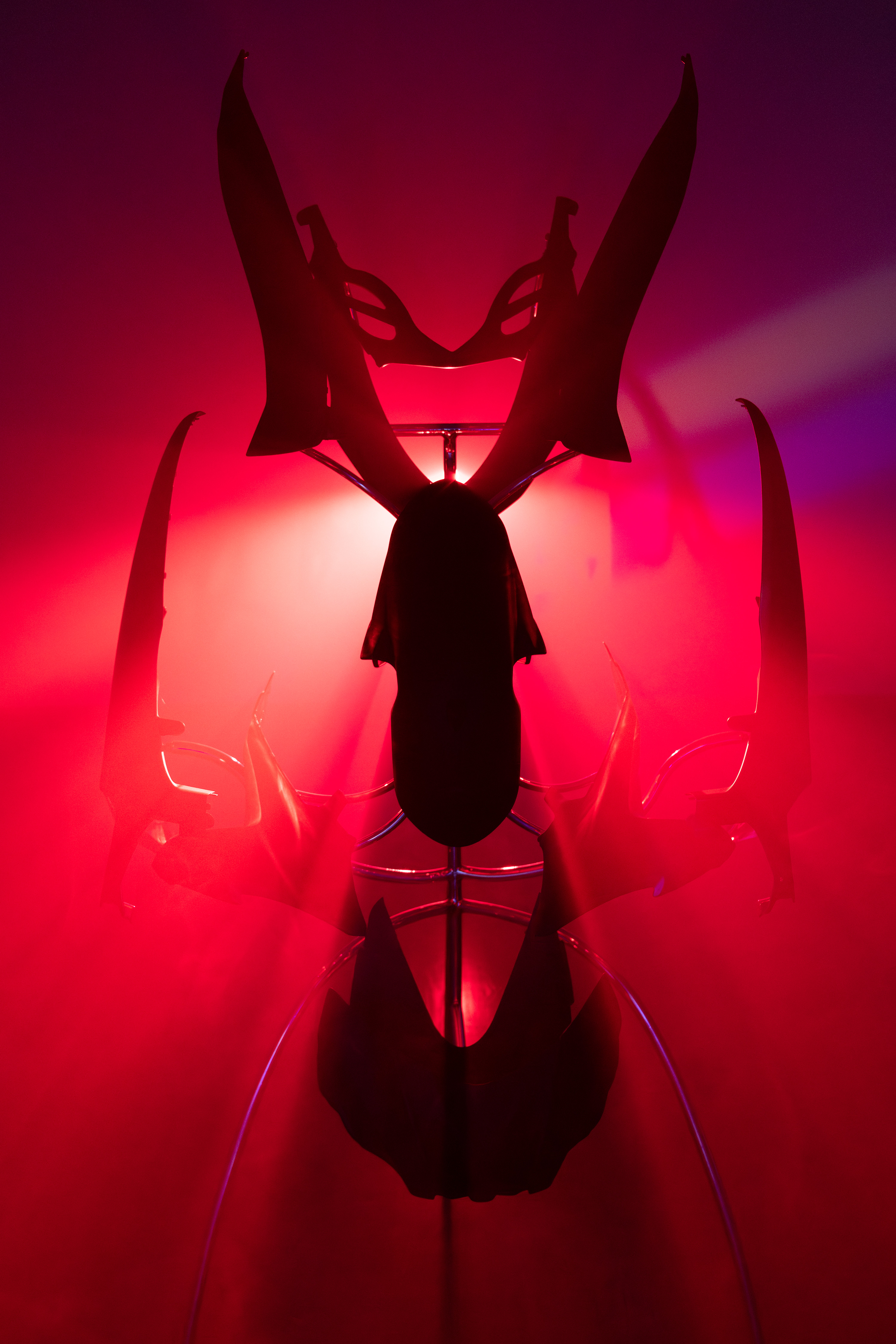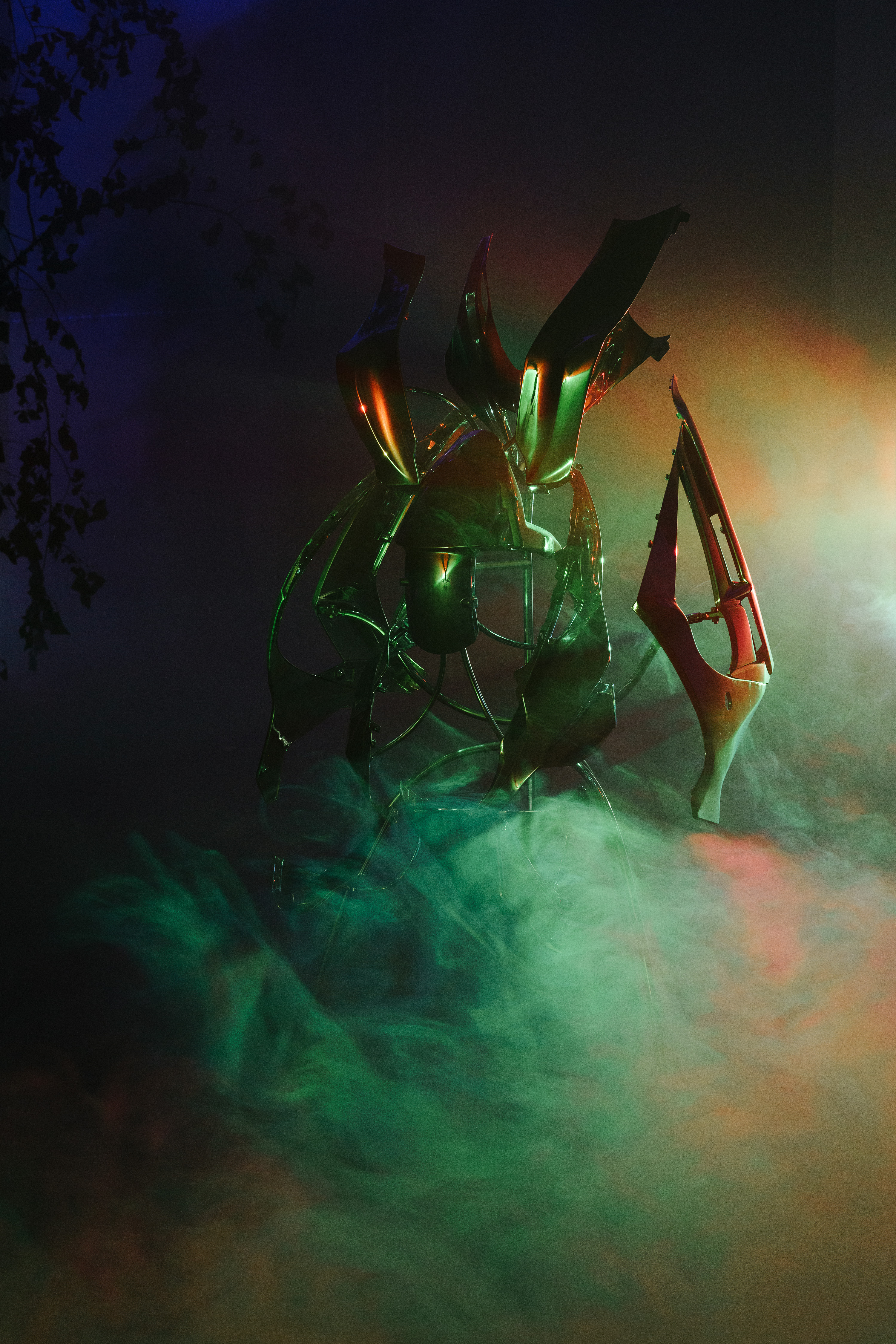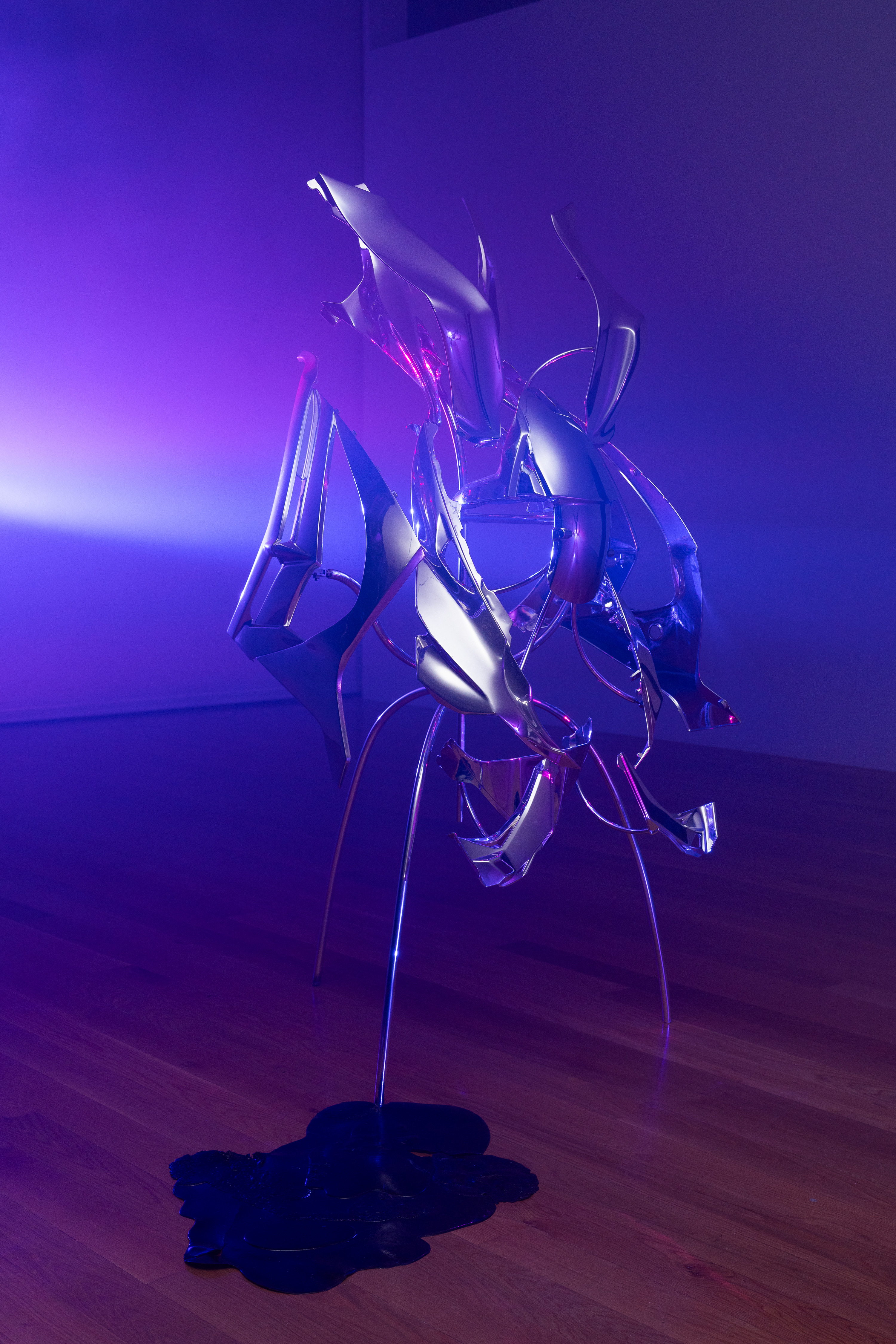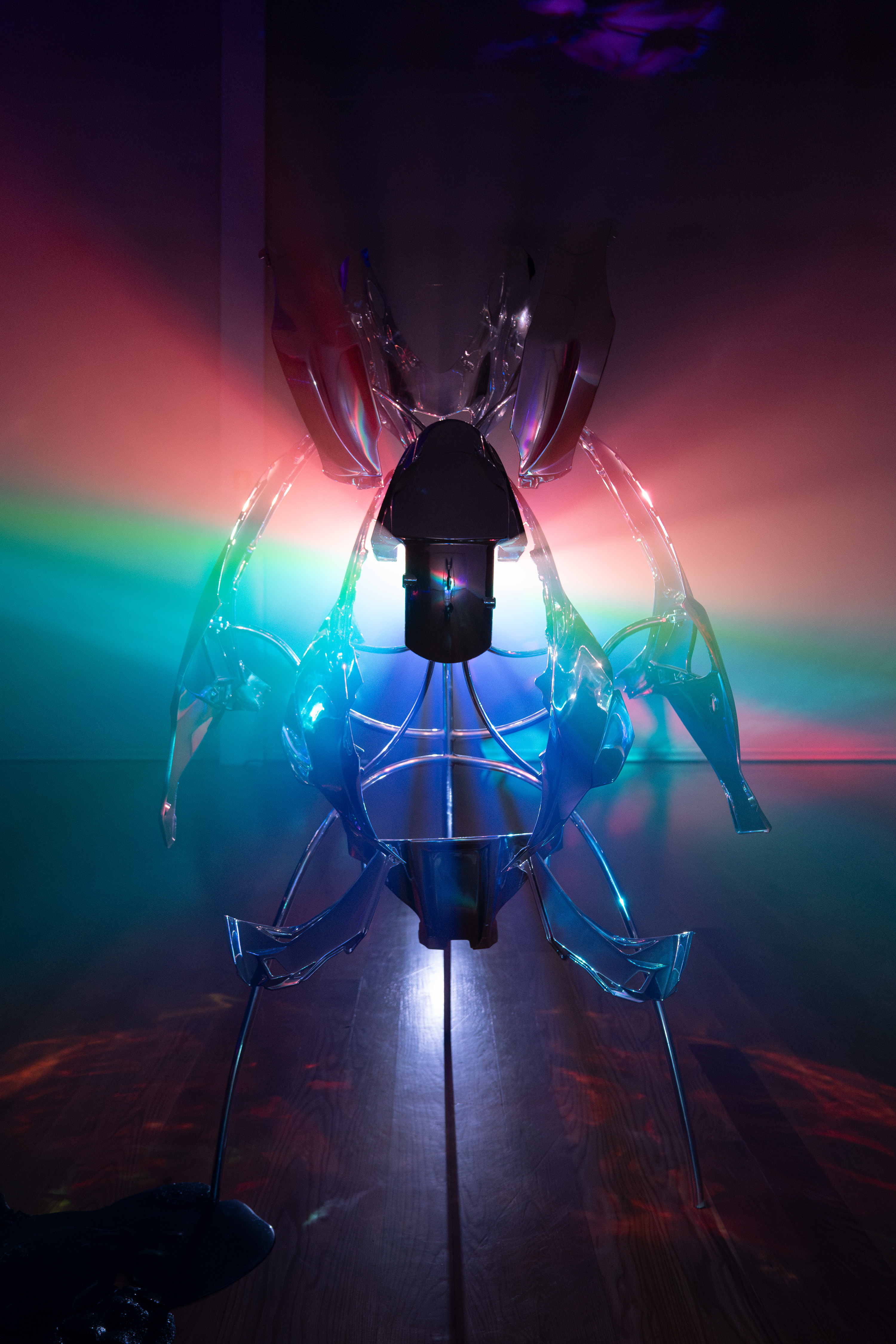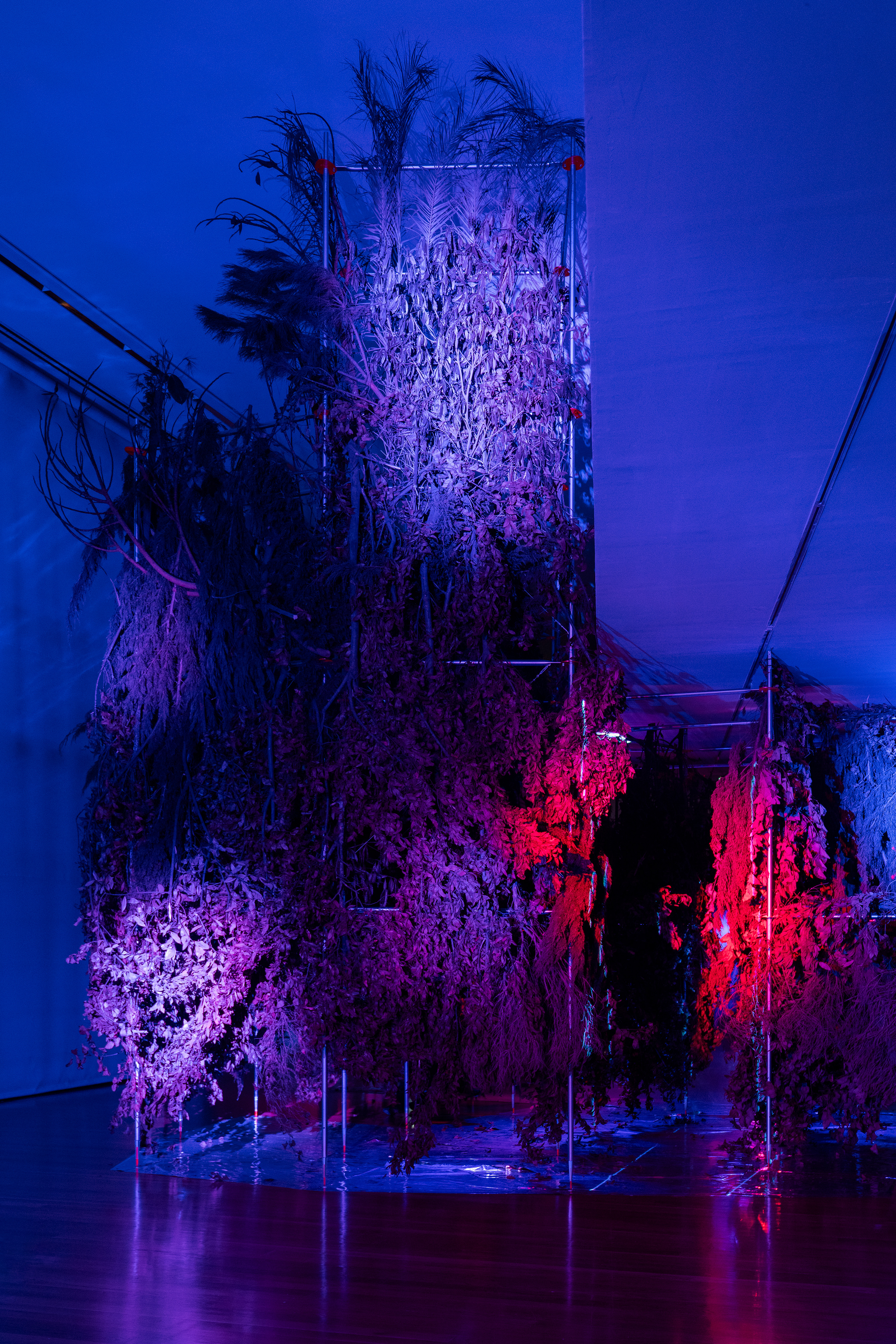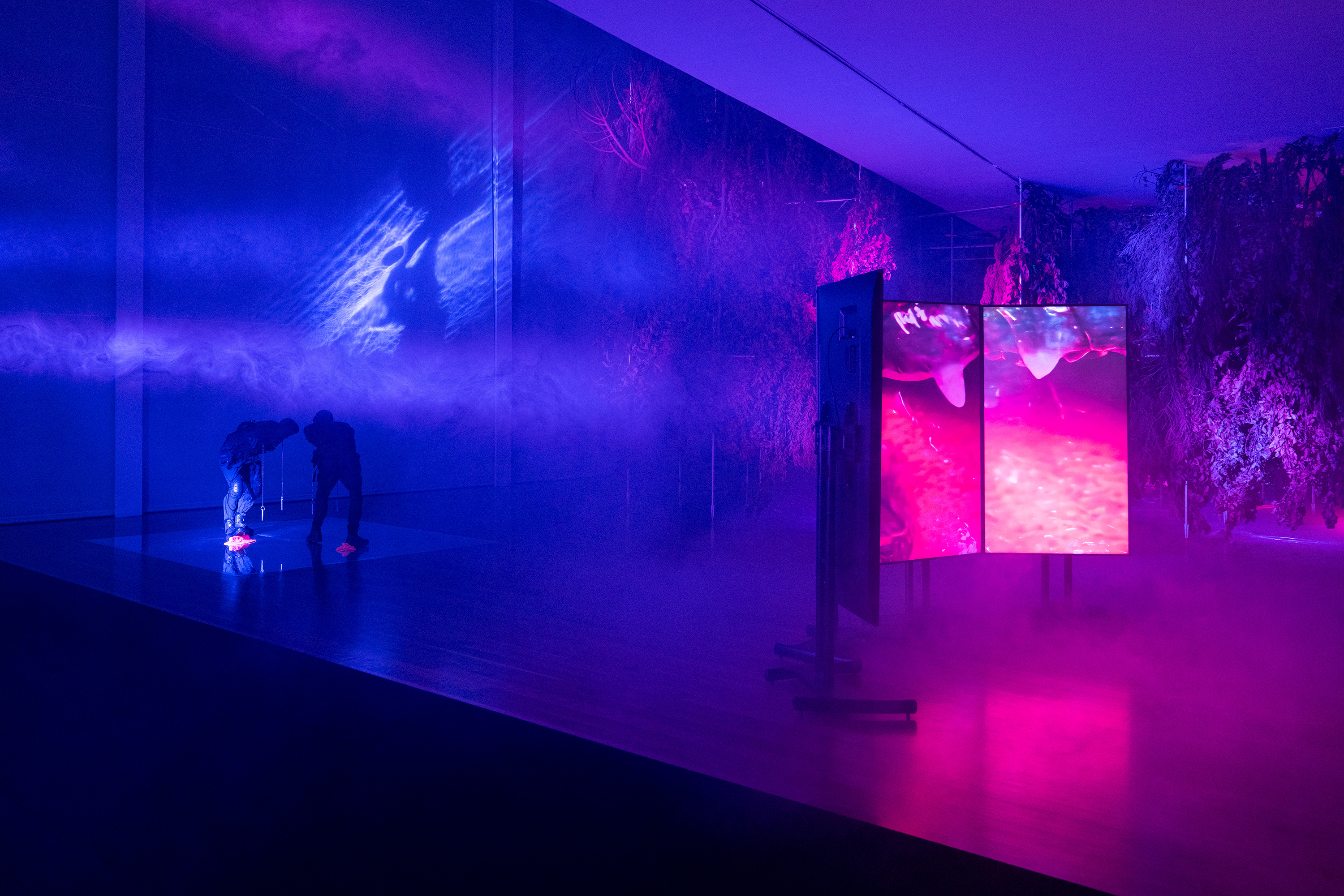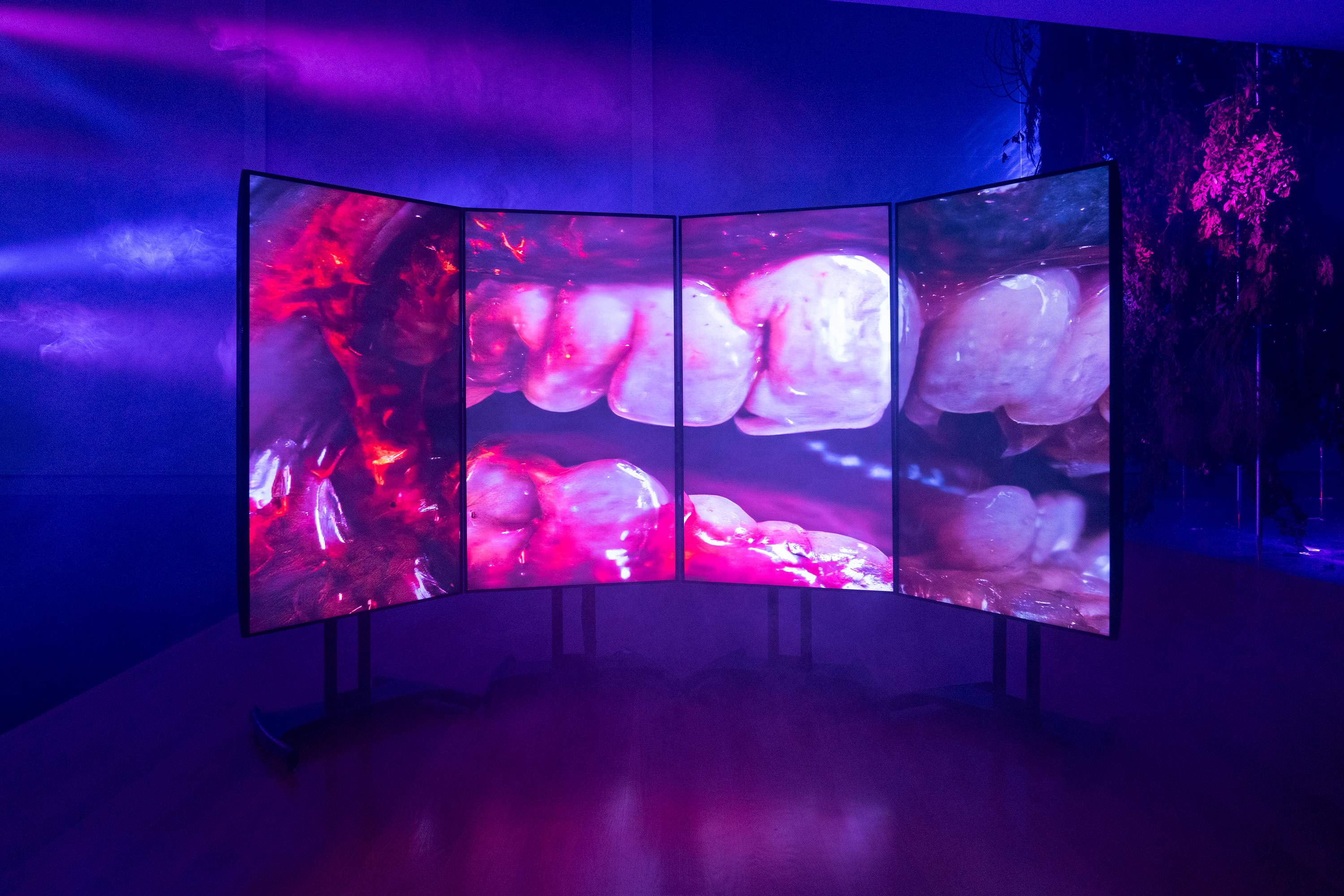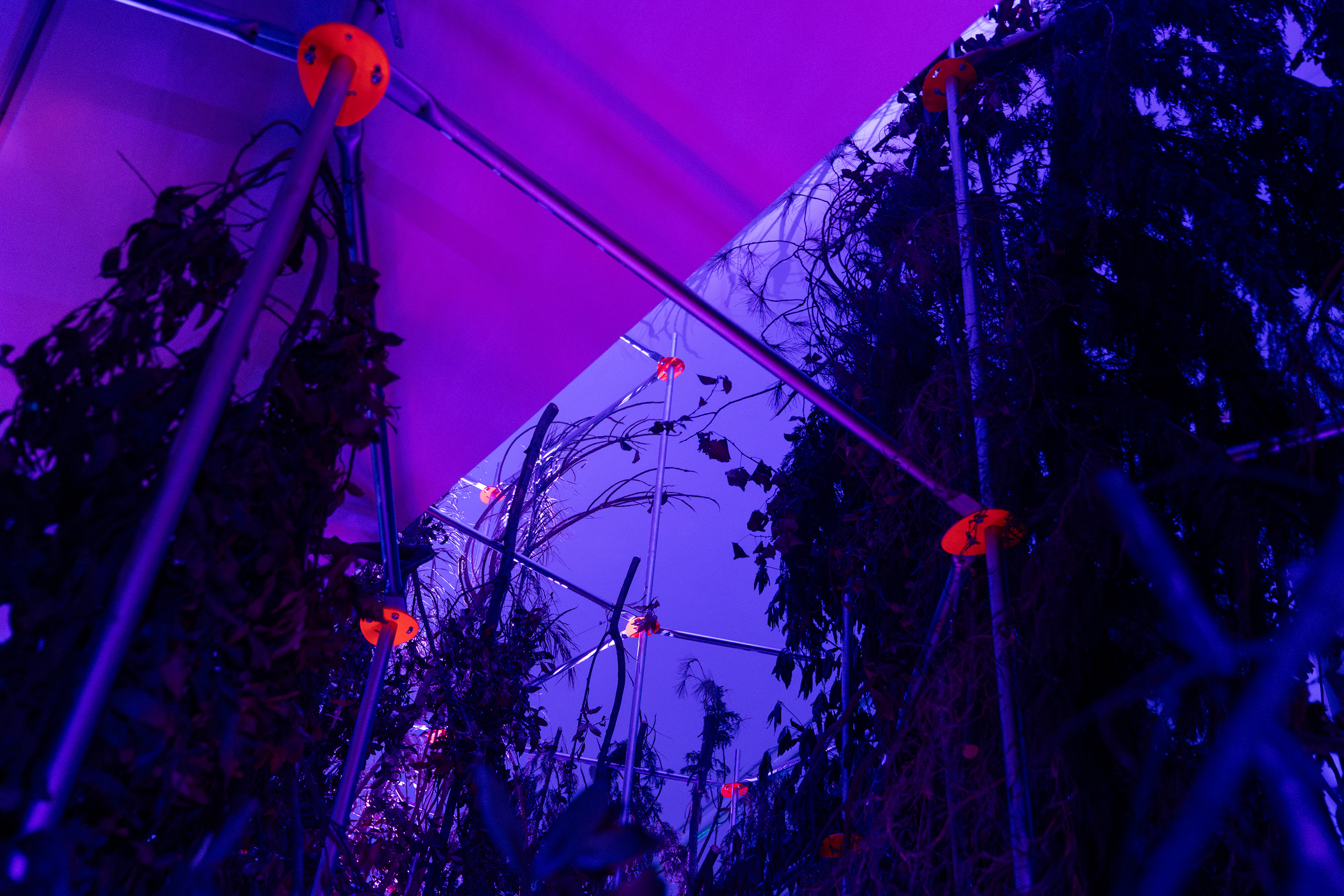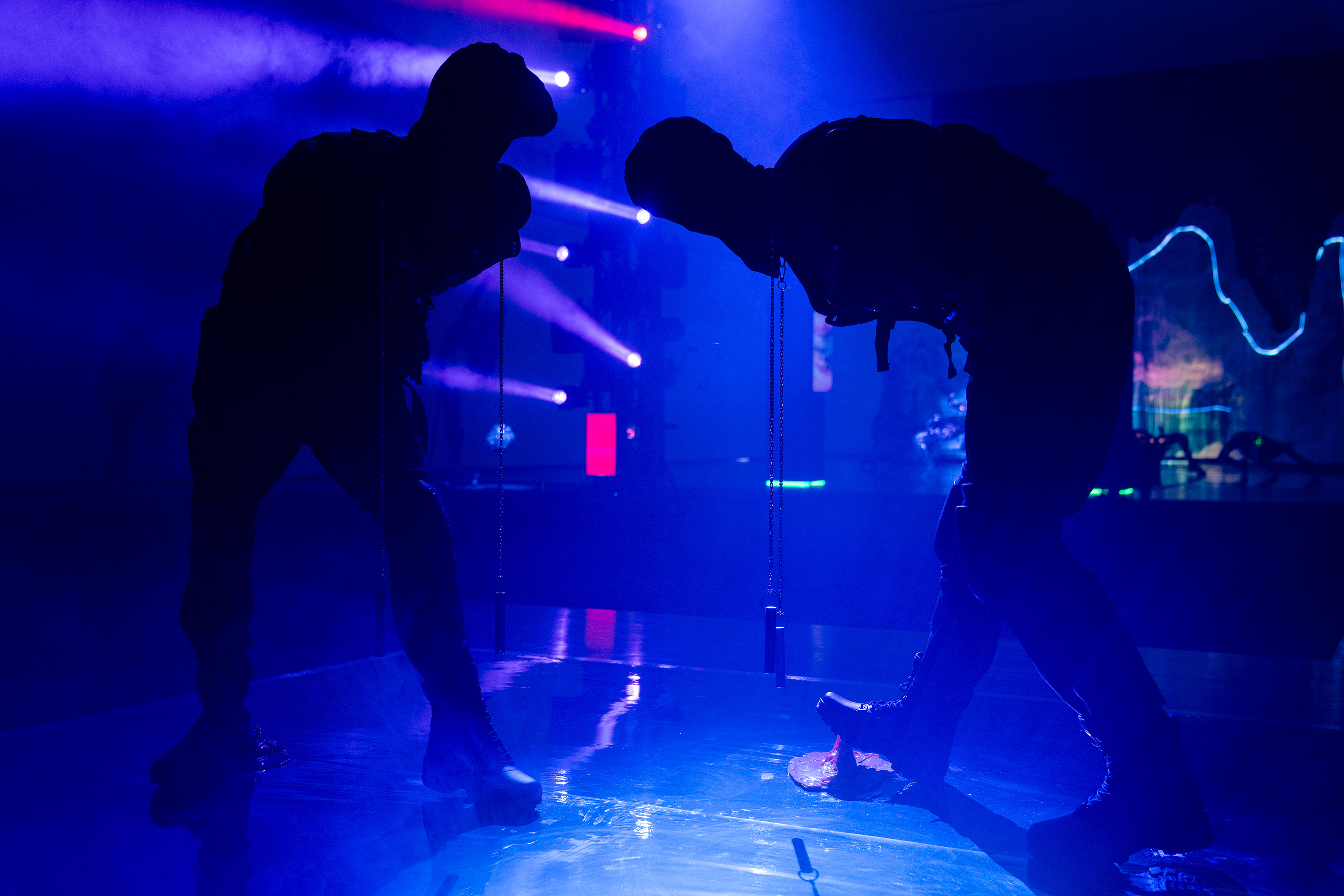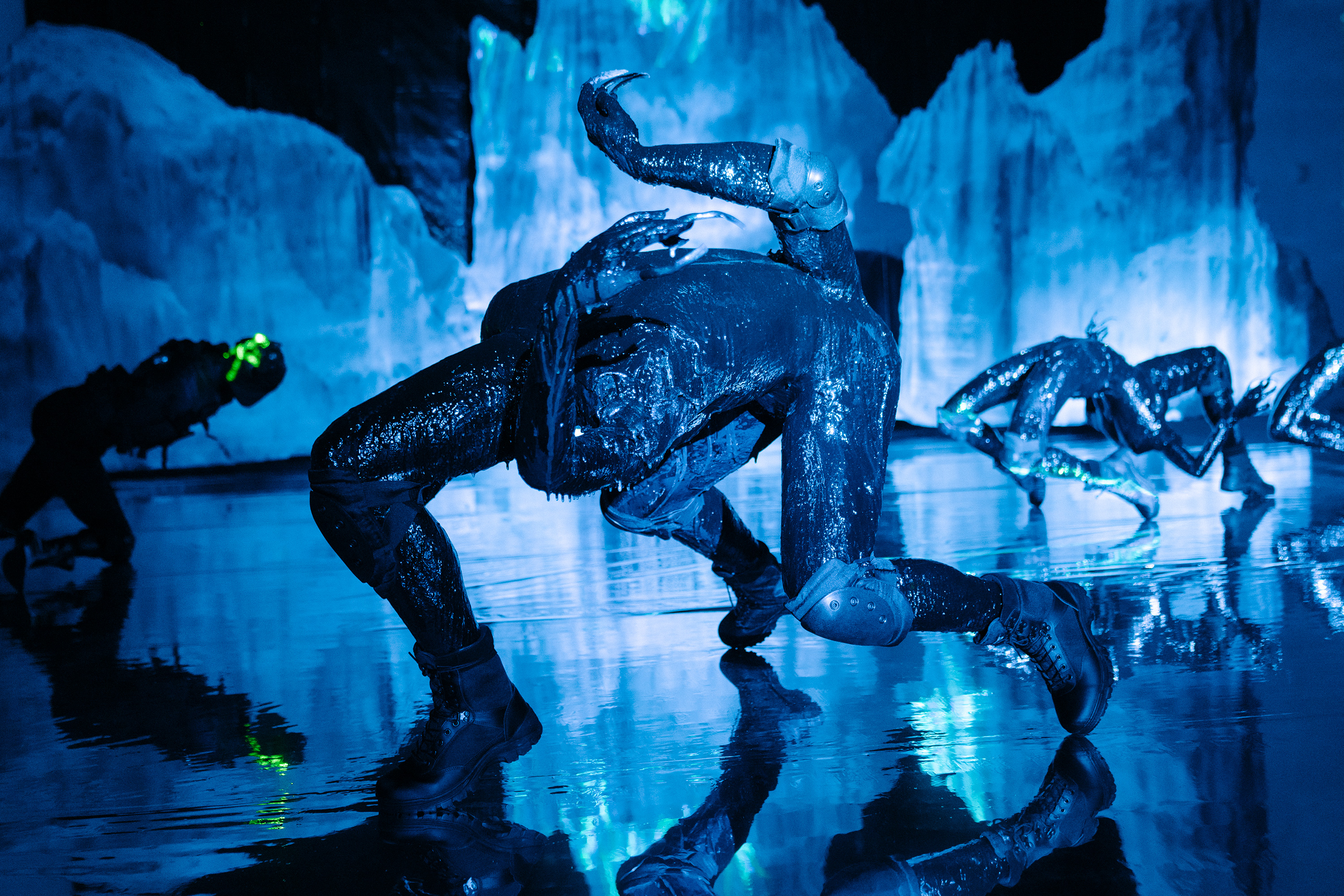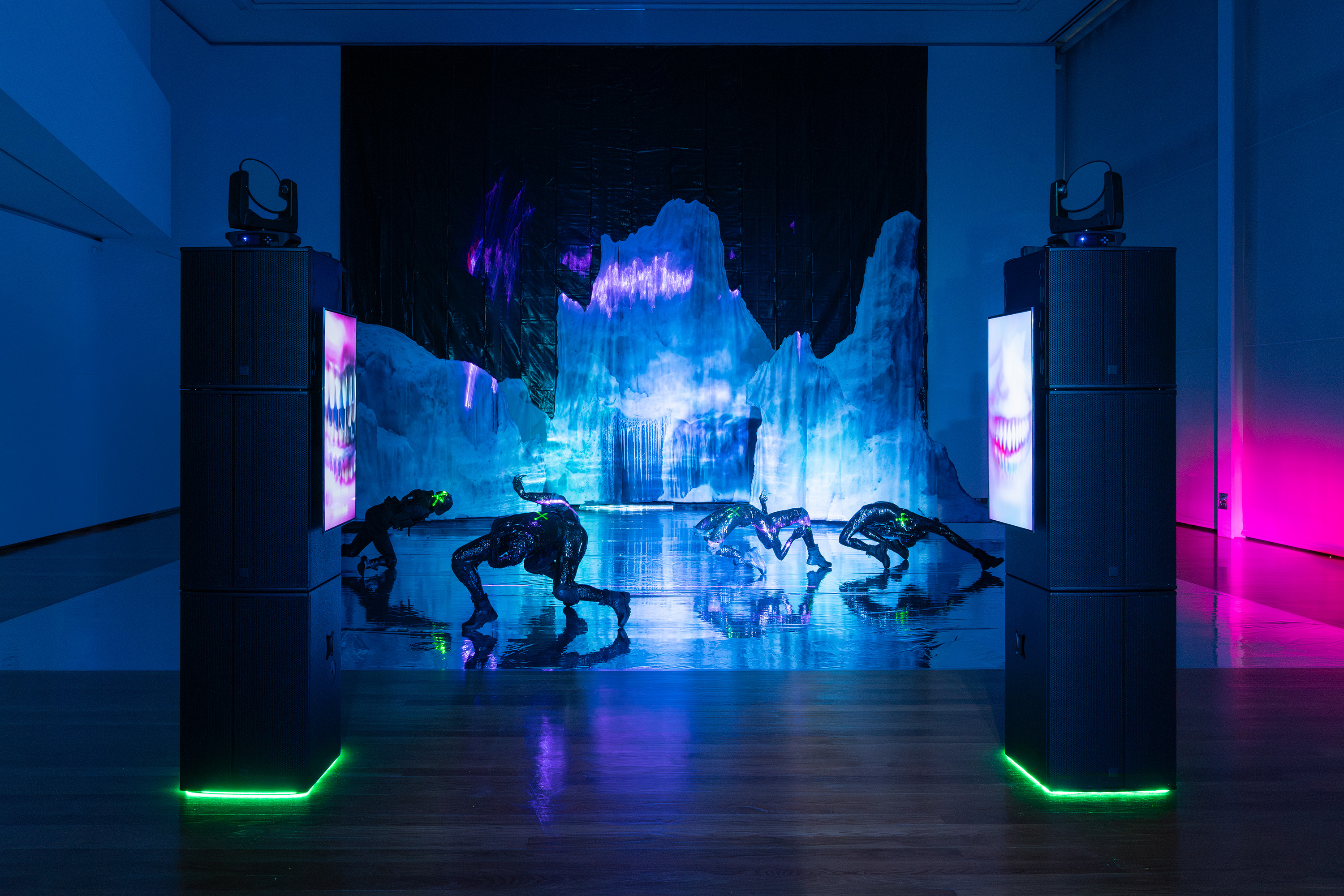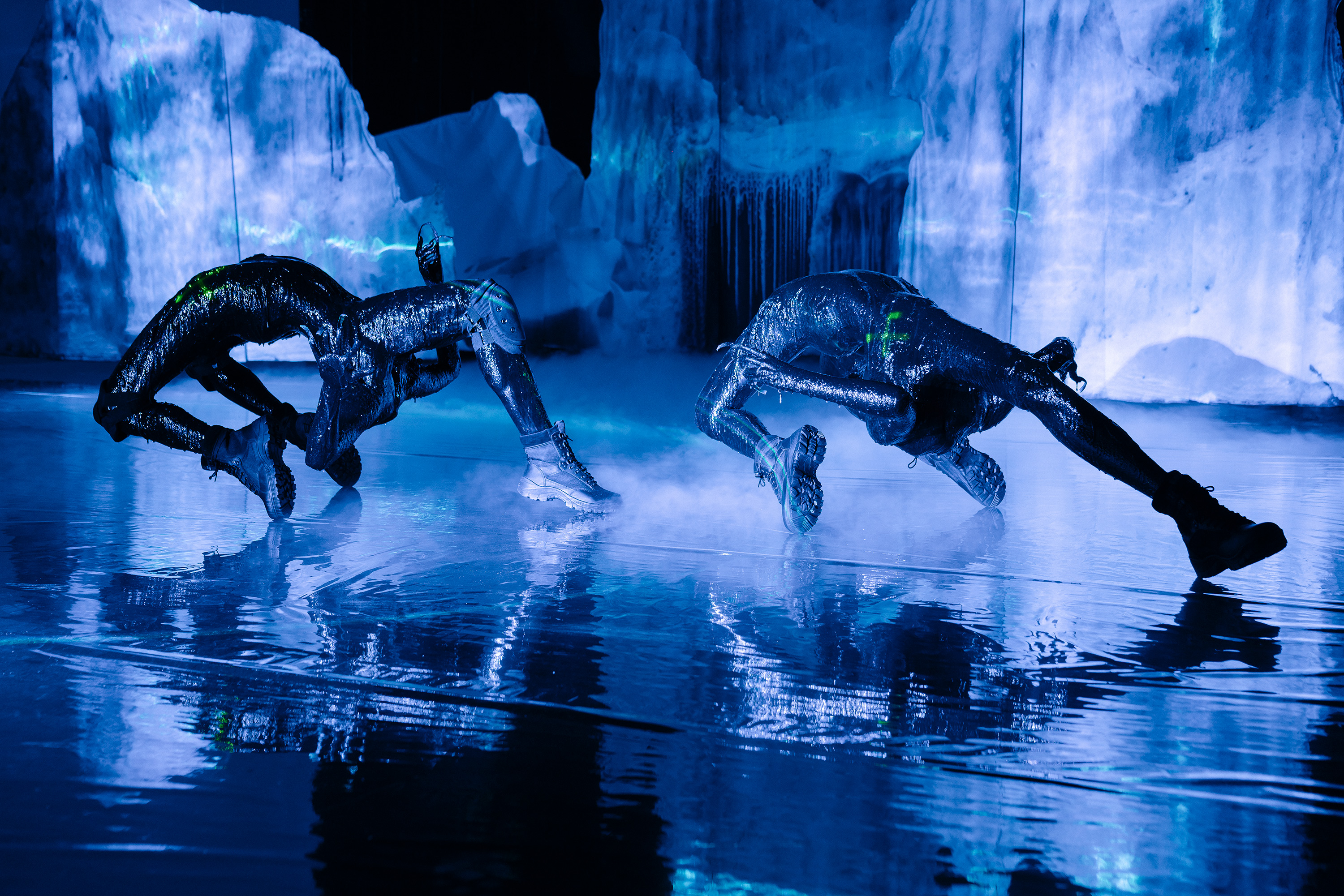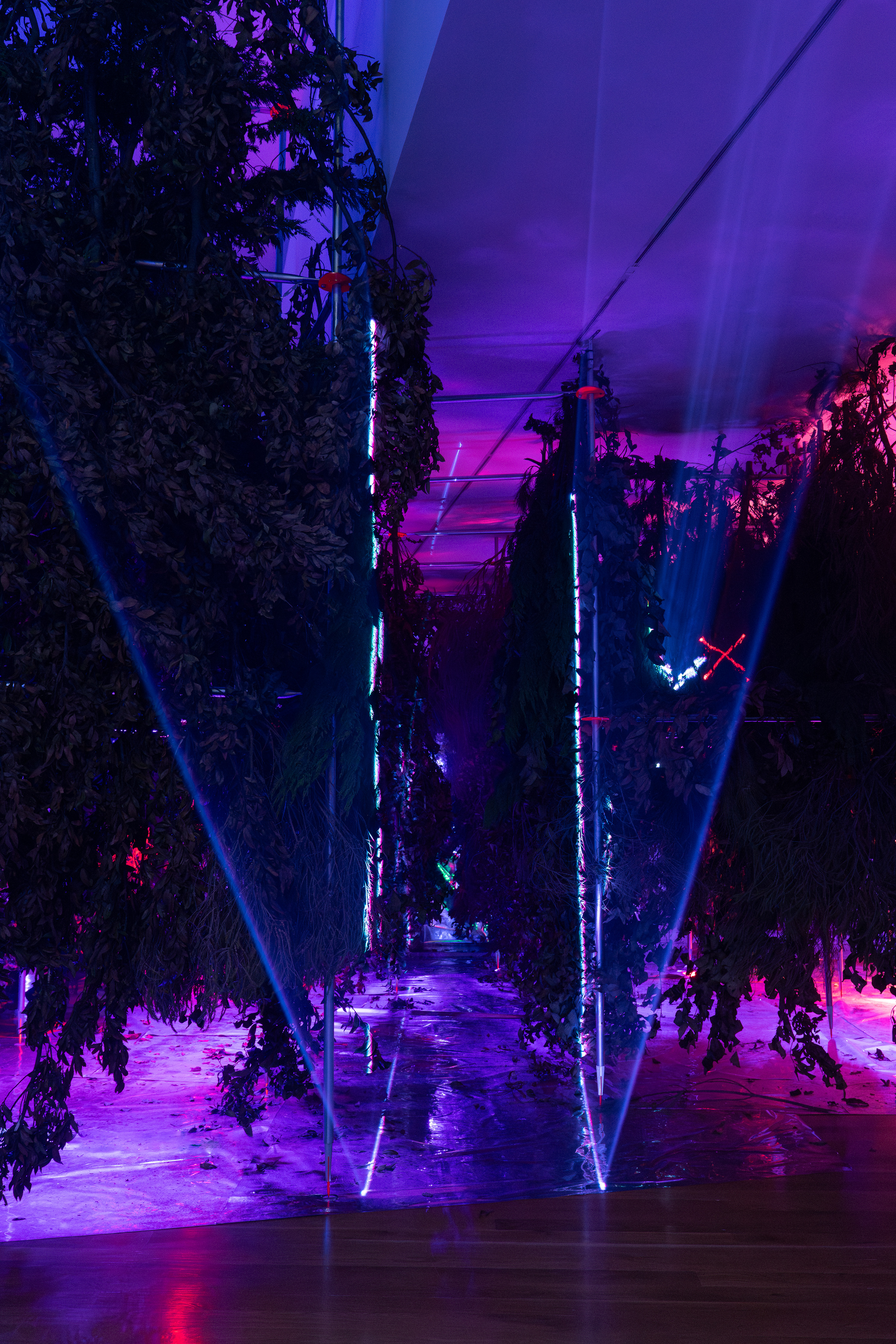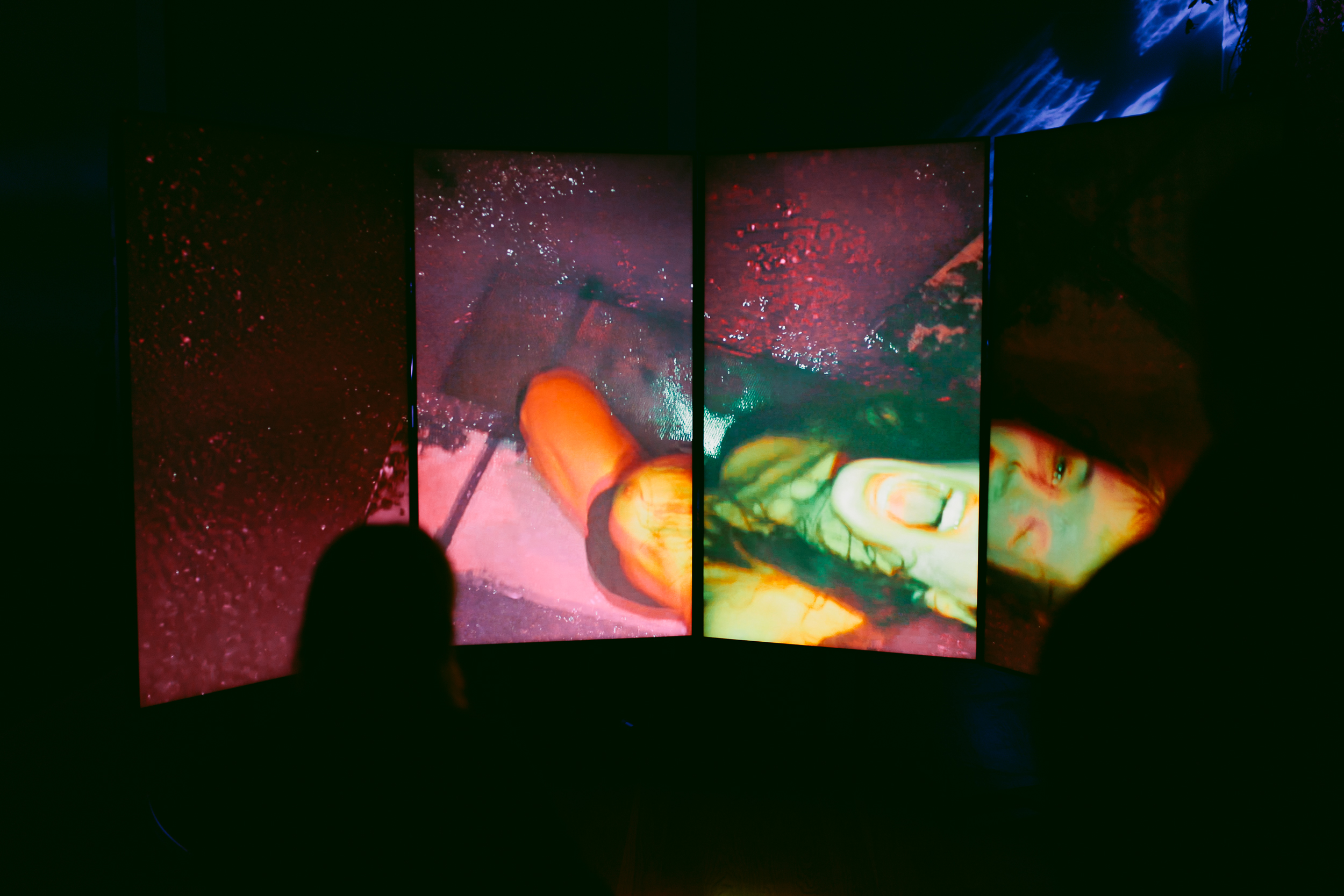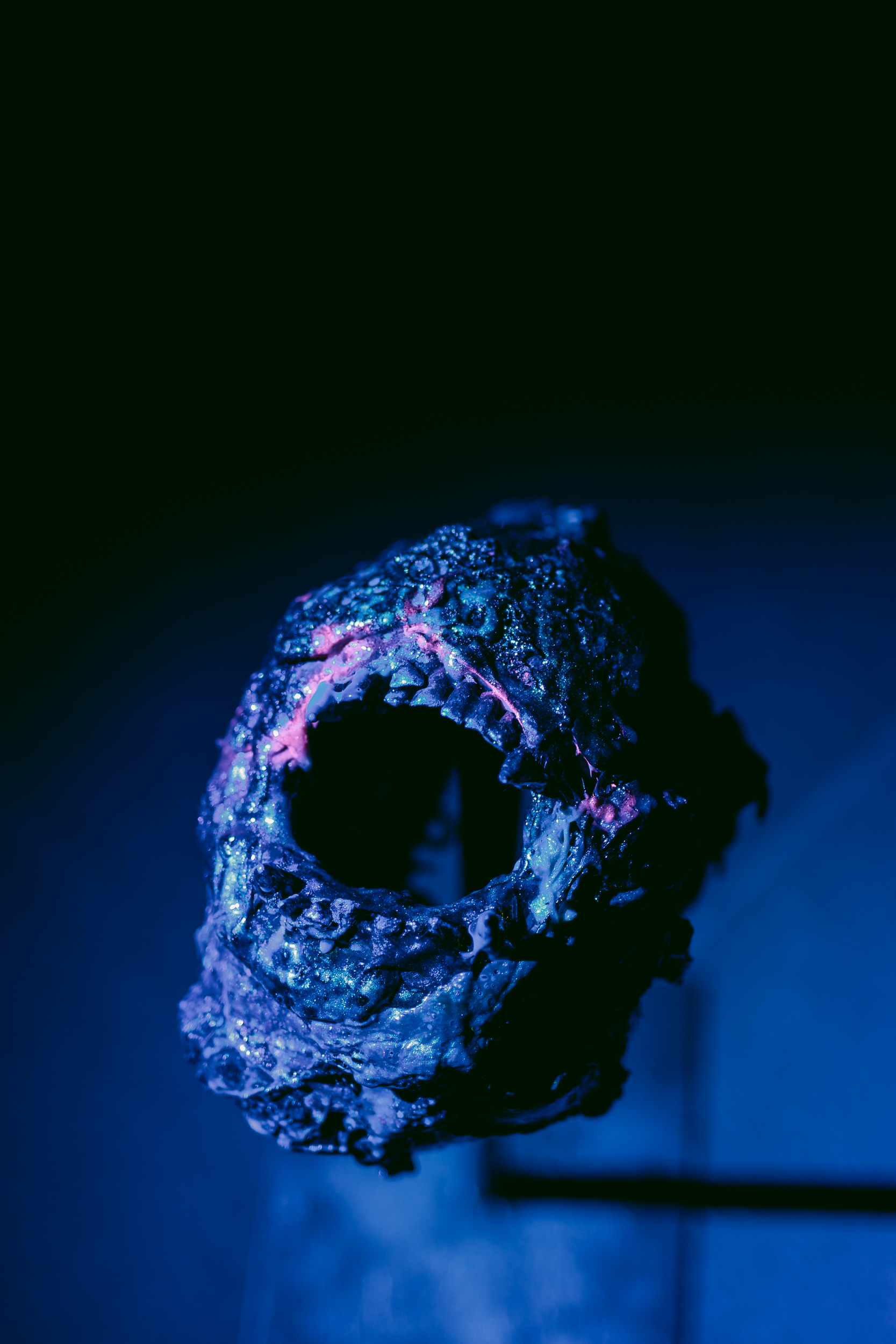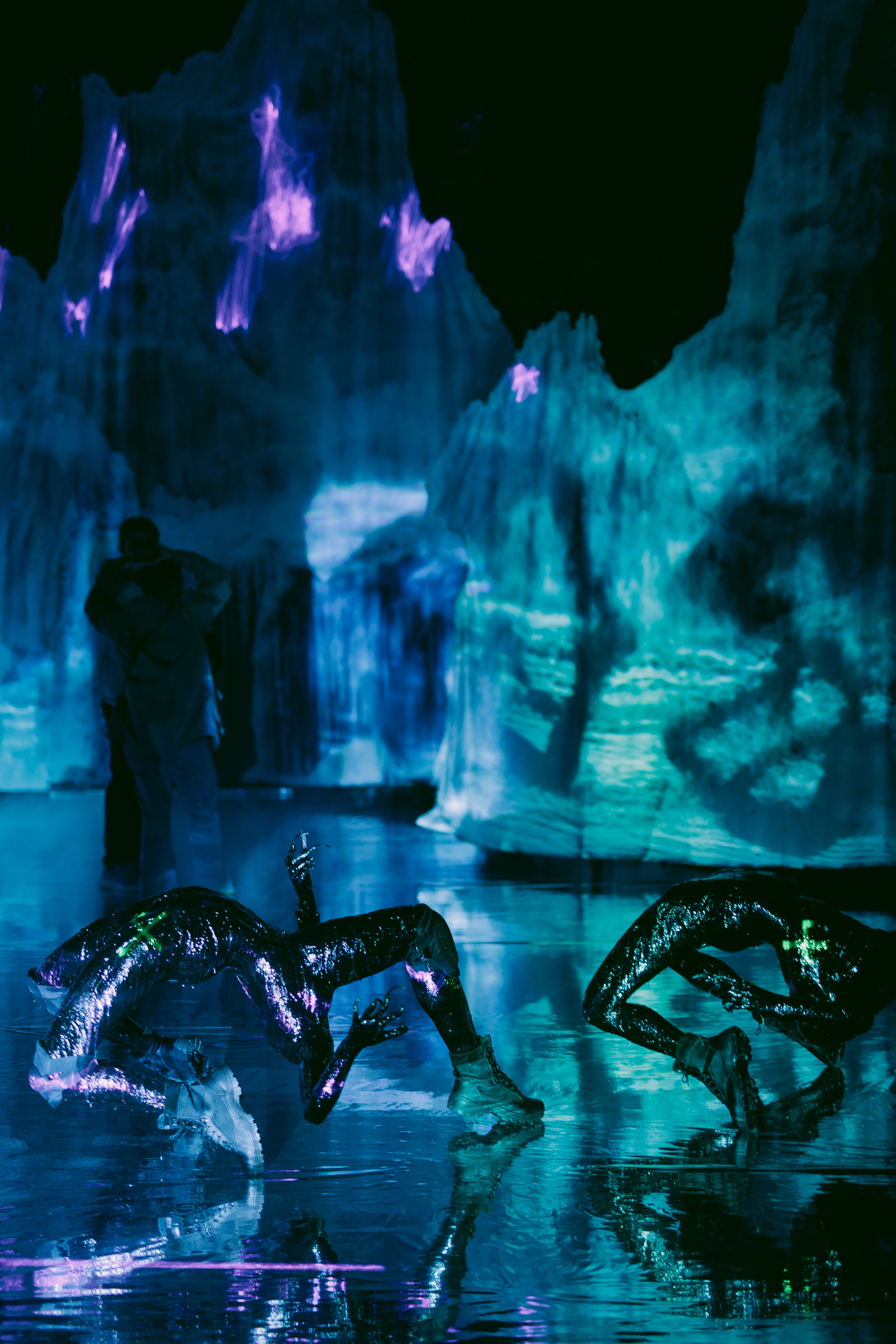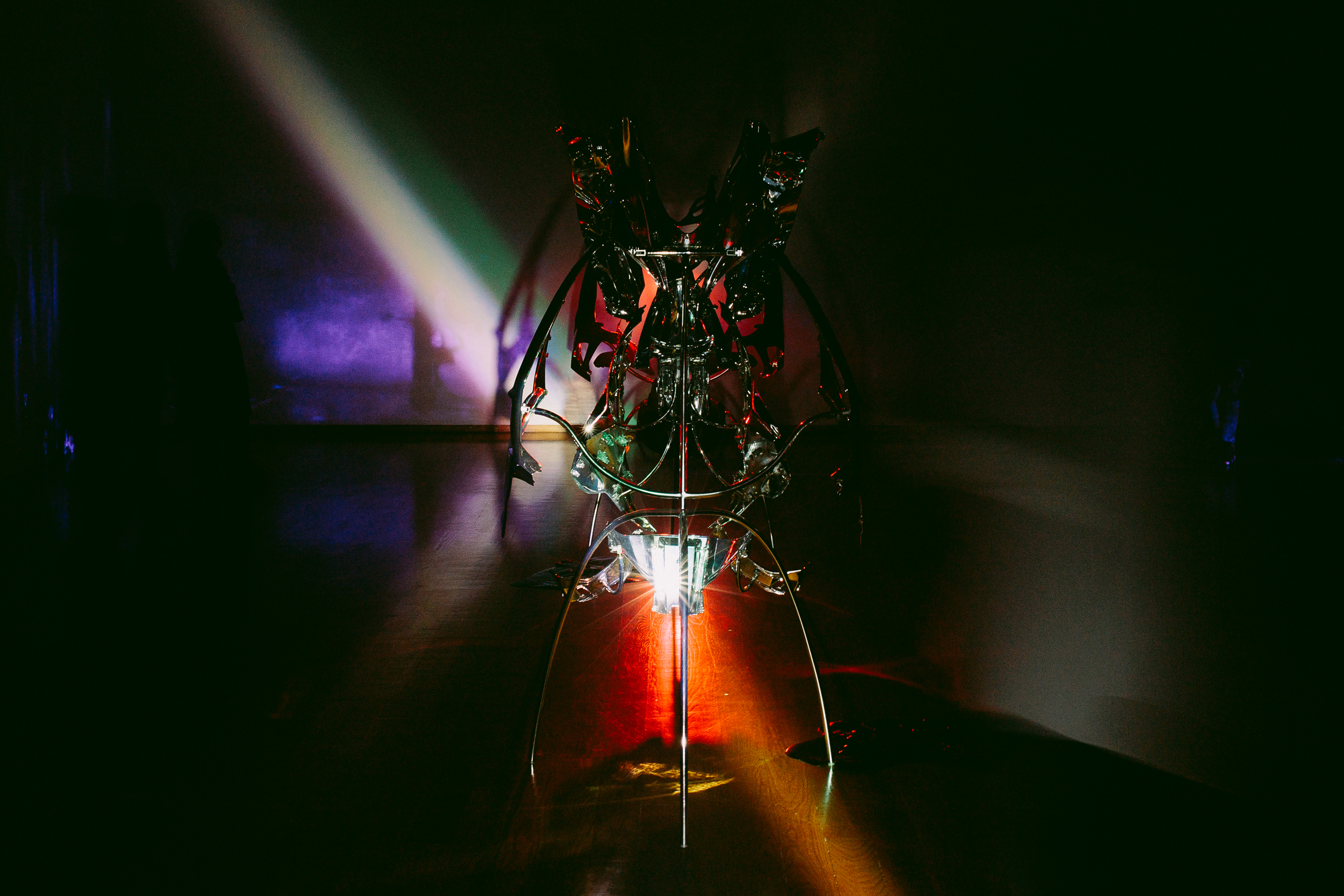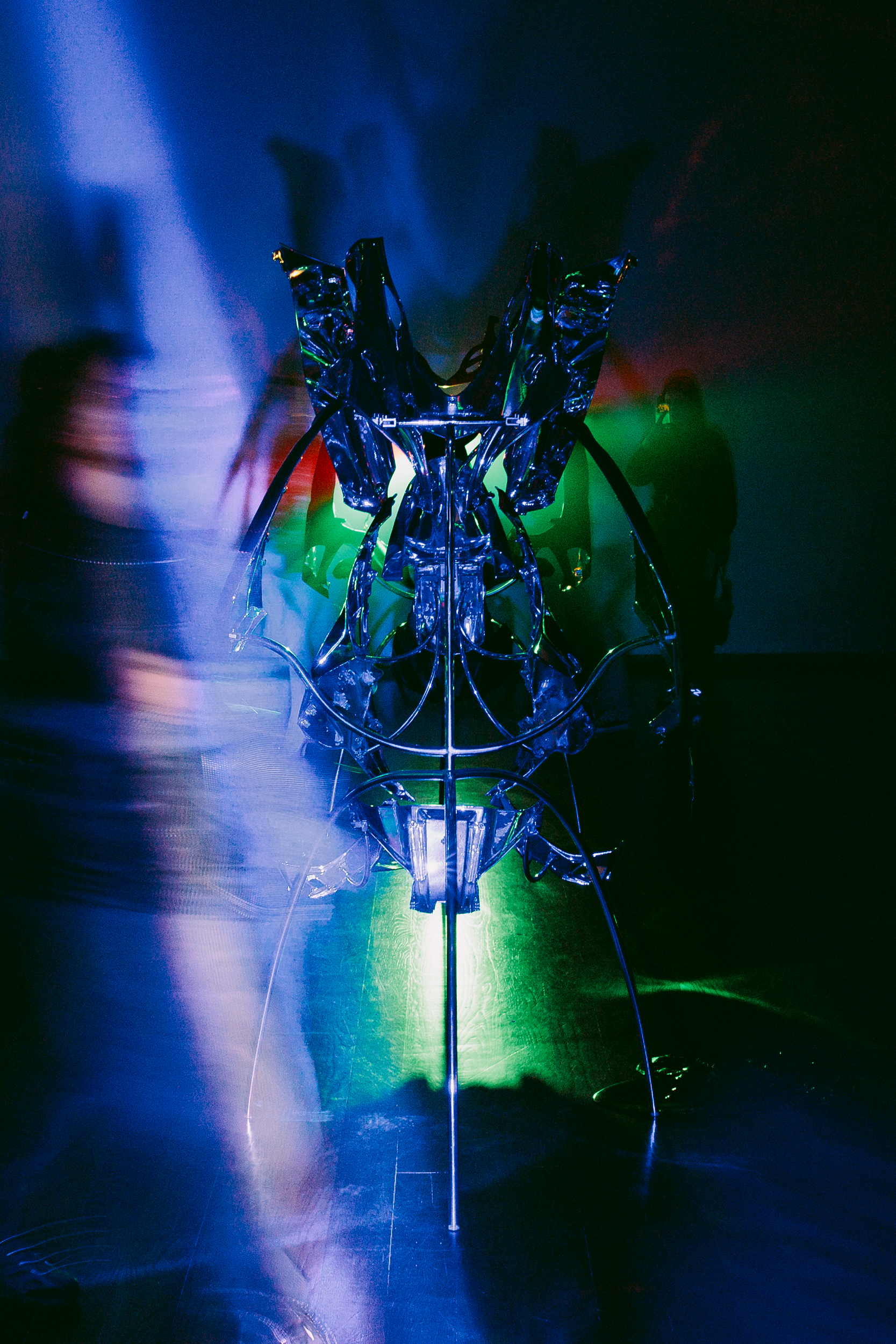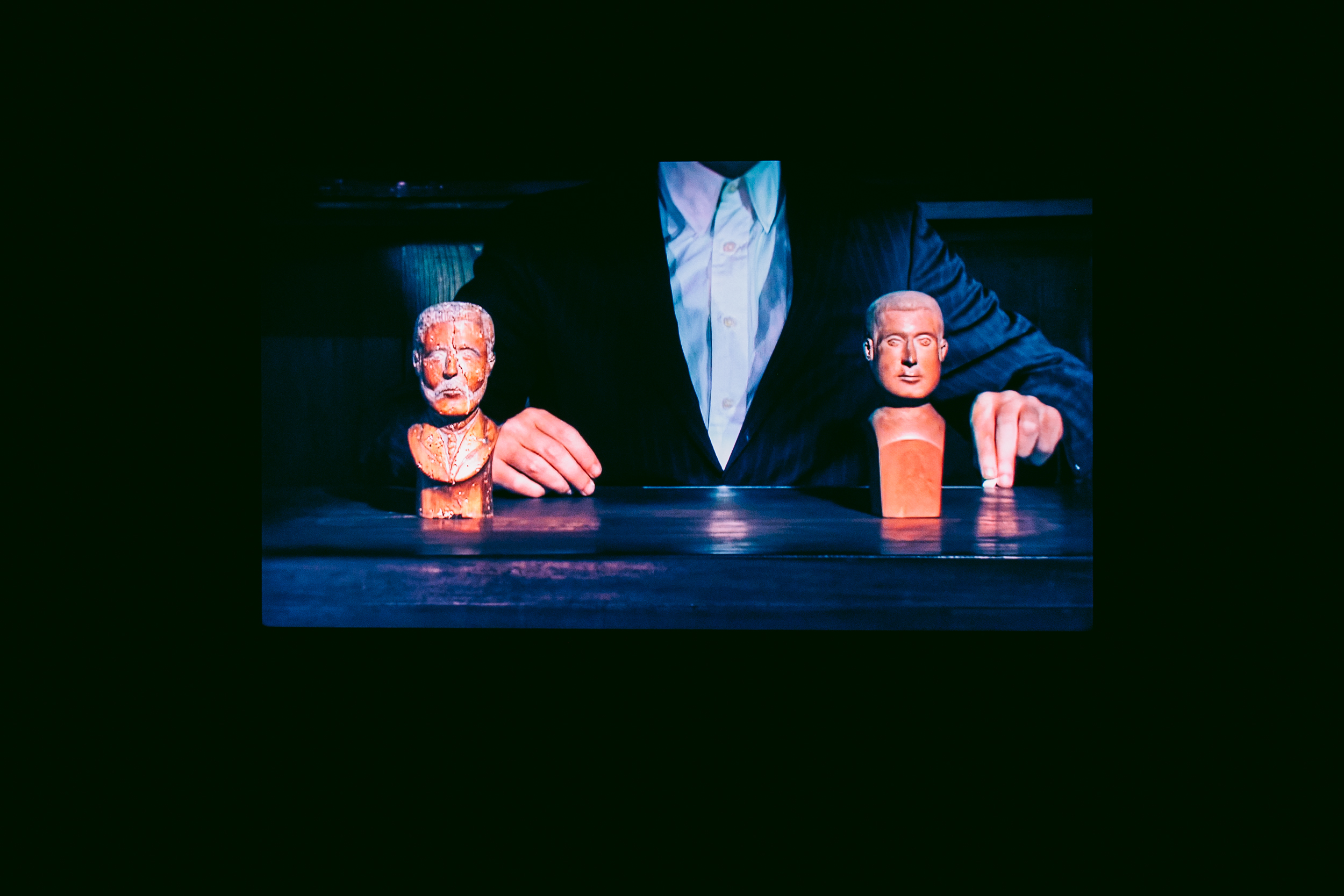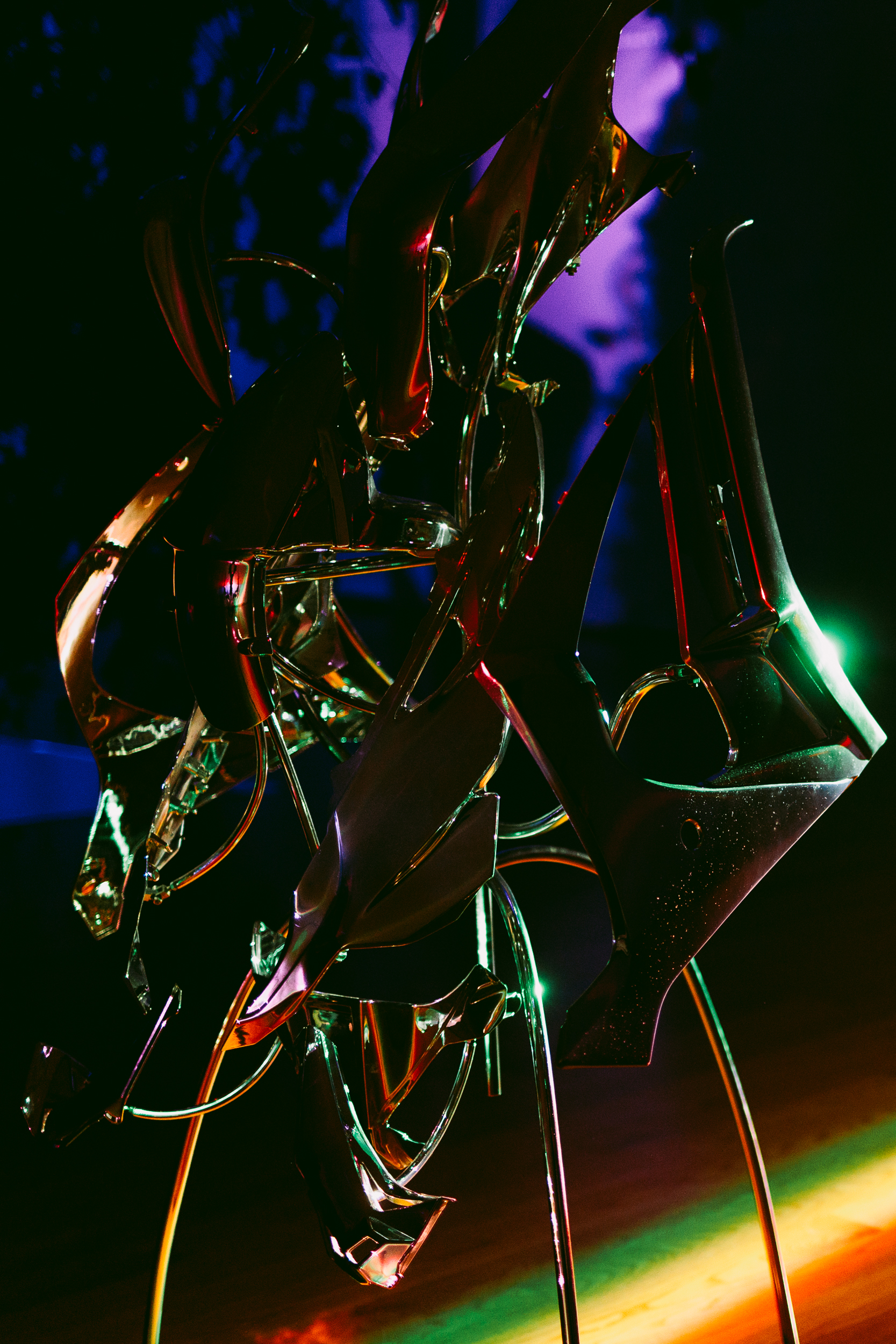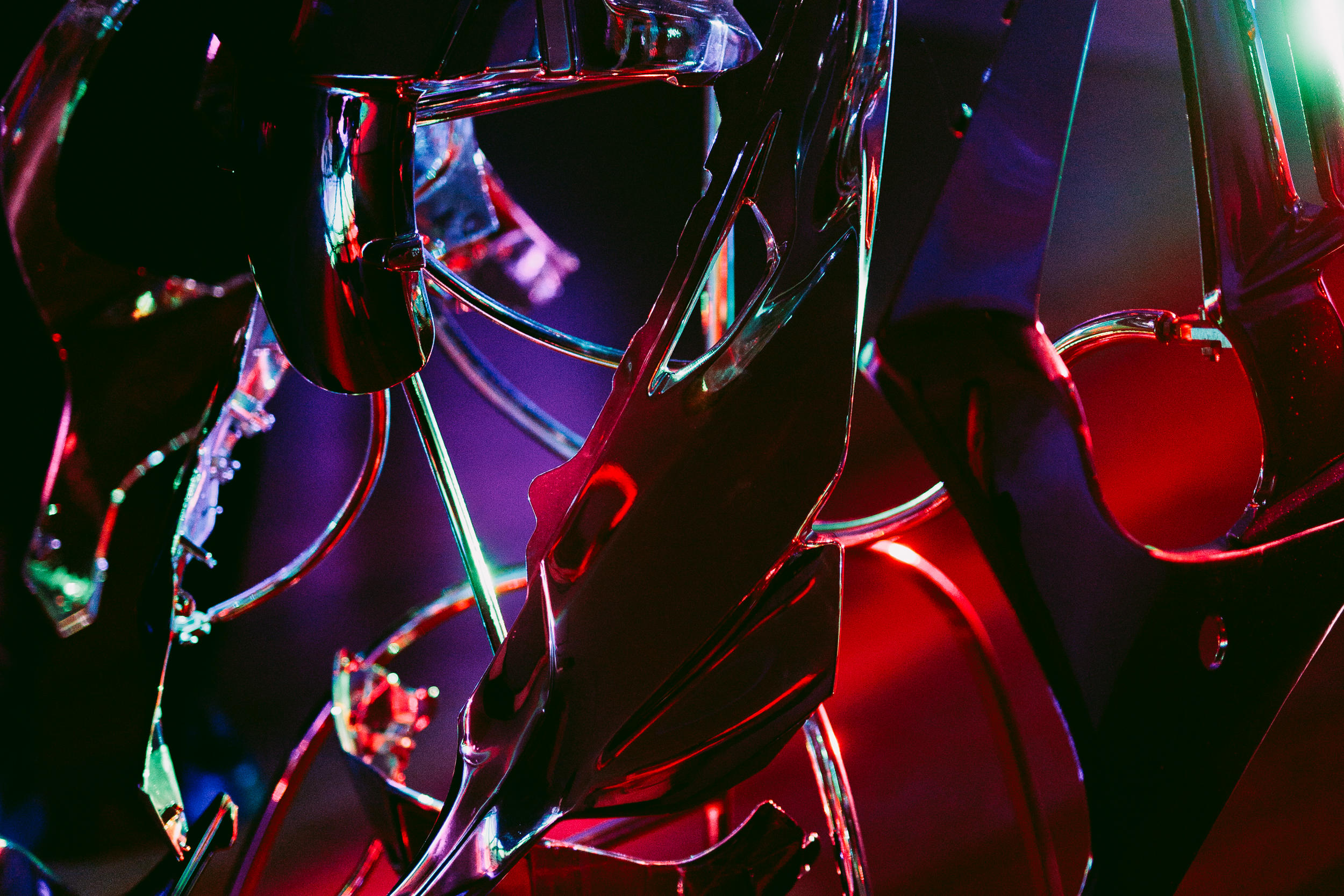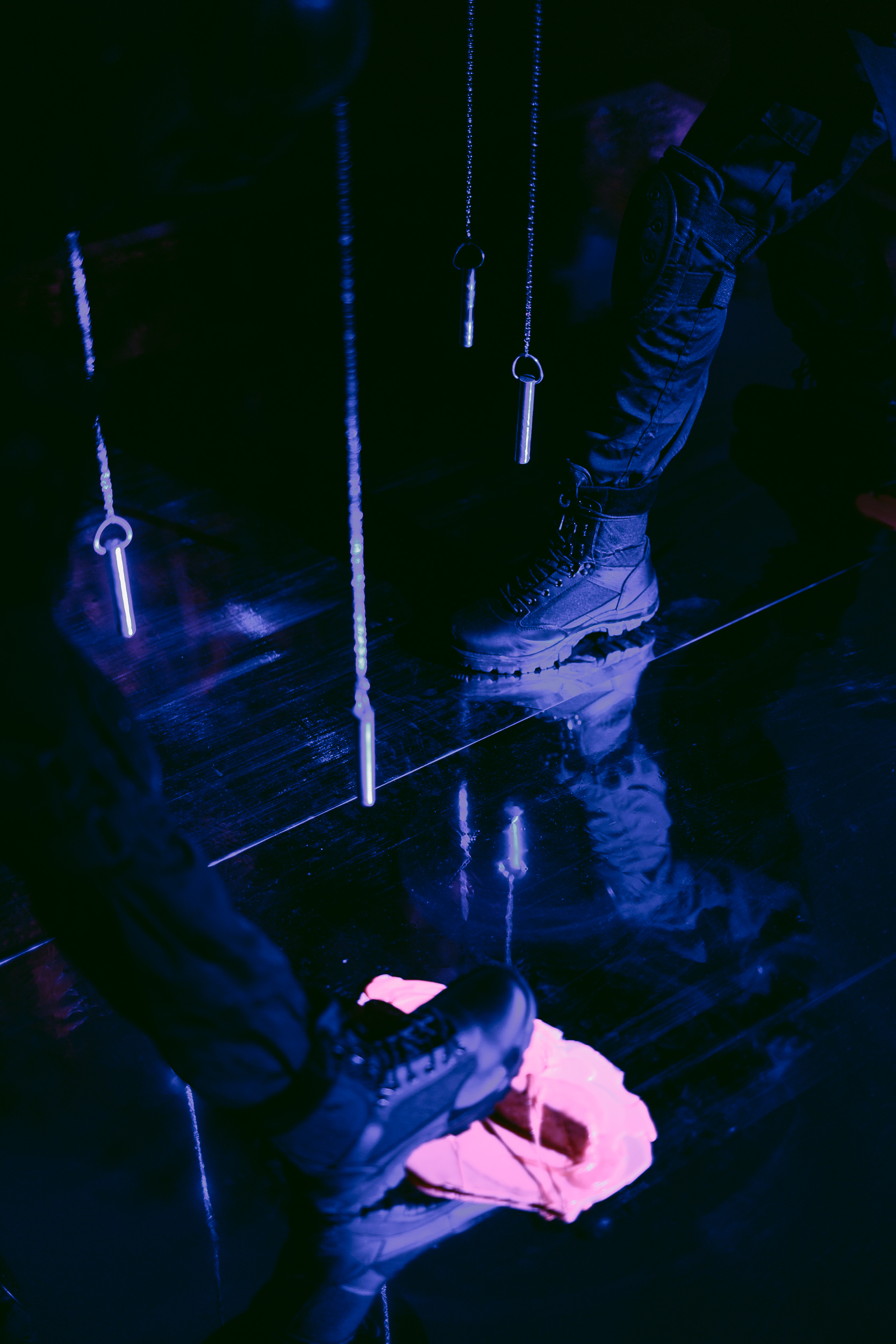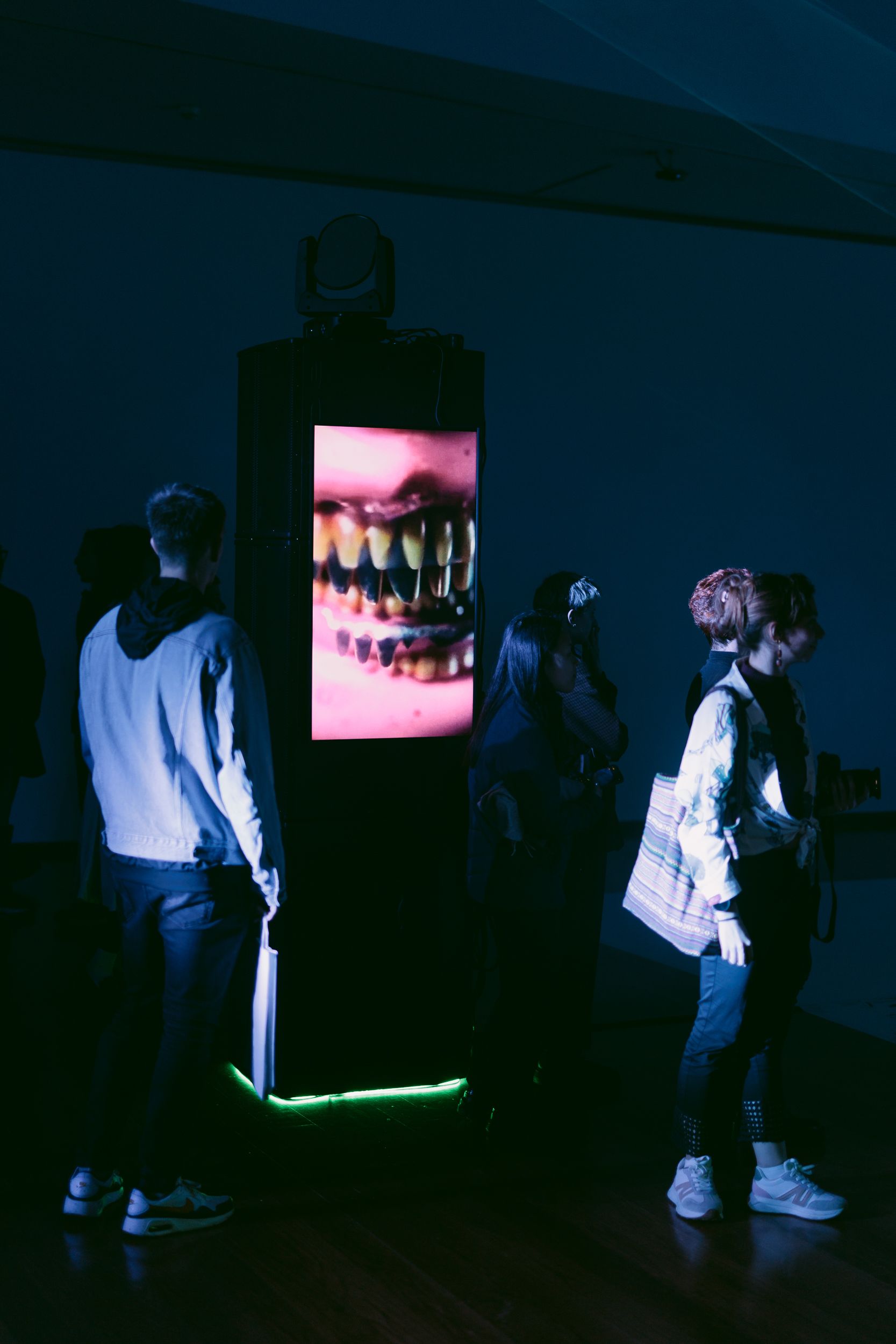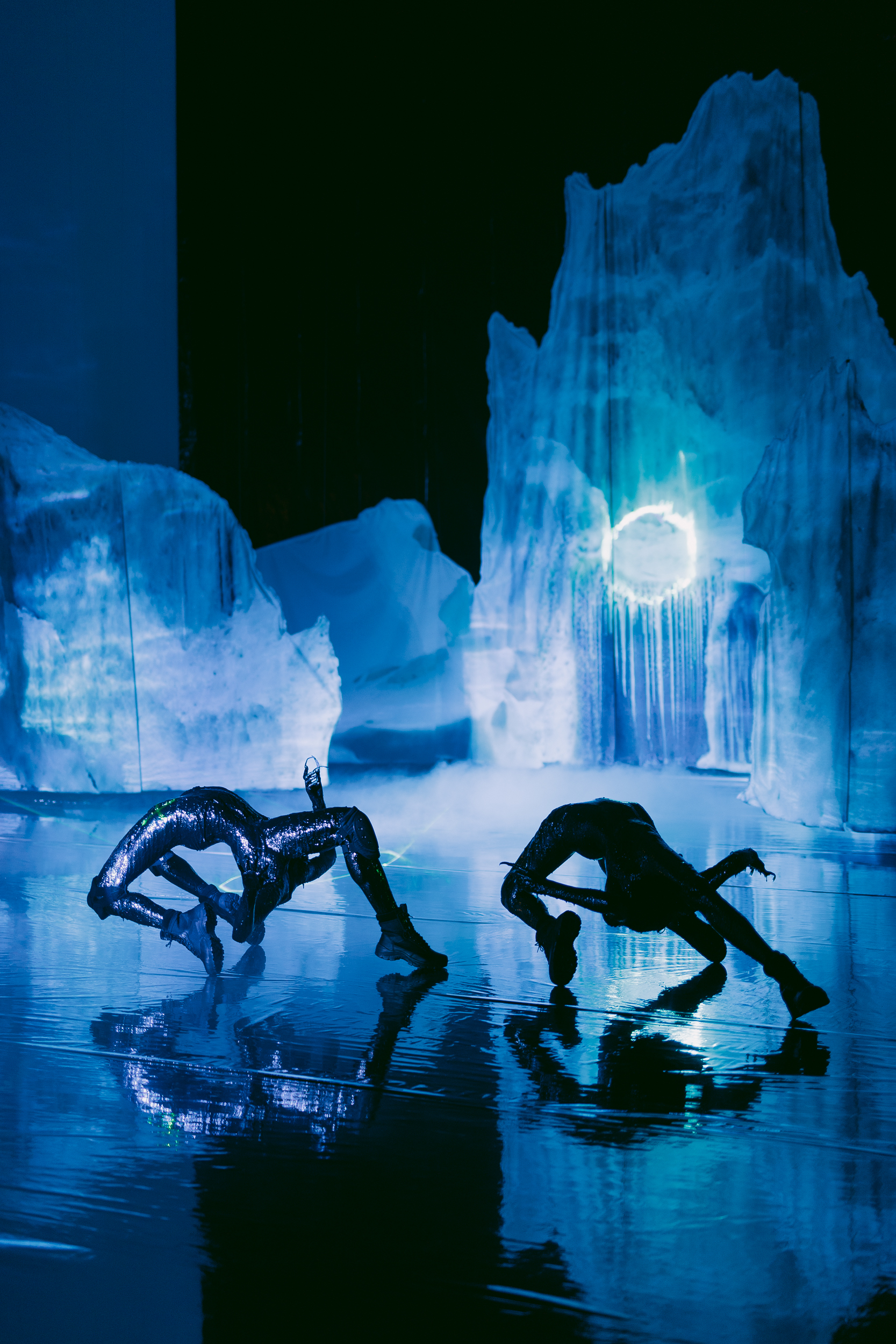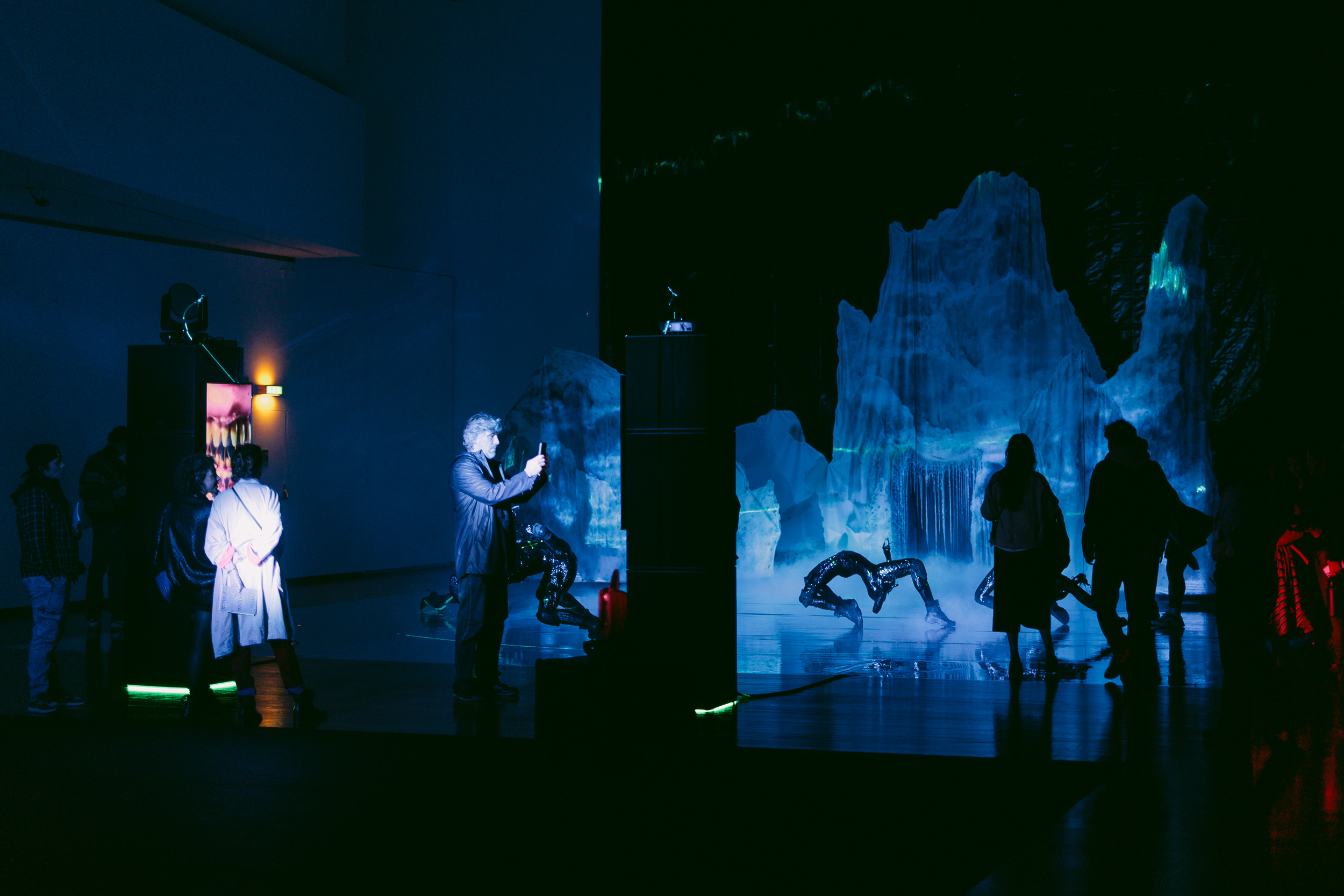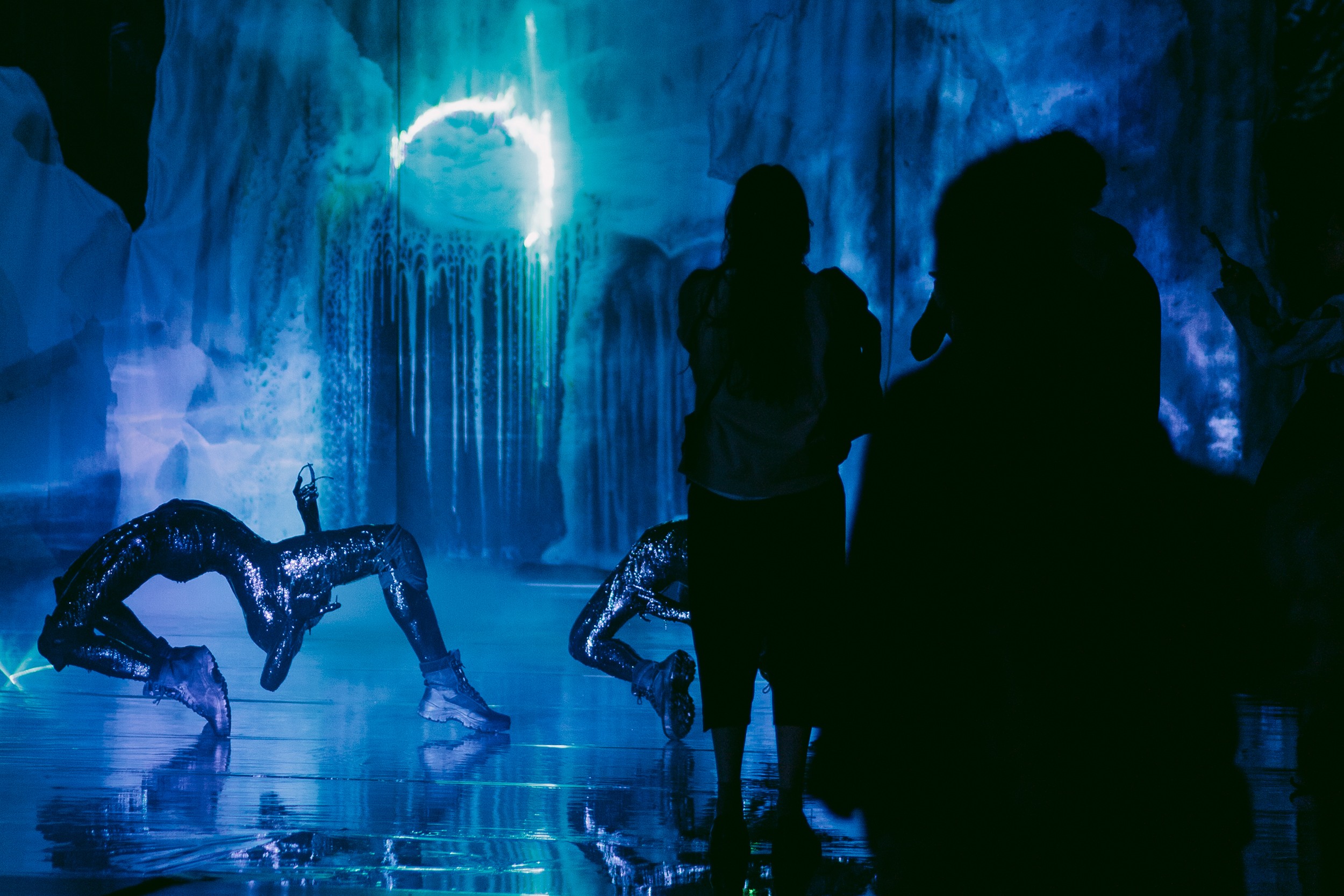Surface Disorder
2024, Galeria Mununiciapl Porto

team:
Curatorship: João Laia; External Production, Installation, and Exhibition Design Team: Caliente Studios (Isadora Borges), Colectivo Febre, Da- niel Martins, Gonçalo Guiomar, João Brojo, Joaquim Durães, José Arantes, Júlio Alves, Luís Chaka, Manuel Veludo, Miguel Lopes, NovaLux Coletivo (Renato Marinho, Francisco Cam- pos), Sérgio Carvalho, TIL (Patrícia Brito); Acknowledgments: ArtWorks, Catarina Miranda, Emanuel Rinaldi, Galeria Duarte Sequeira, Gabinete de Arvoredo e Viveiro Municipal do Depar- tamento Municipal de Espaços Verdes e Gestão de Infraes- truturas da CMP; Horto Municipal/Município da Póvoa do Var- zim; Divisão Municipal de Estrutura Verde do Departamento Municipal de Espaços Verdes e Gestão de Infraestruturas da CMP (to the entire team and, in particular, the gardeners André Duarte, Avelino Silva, Filipe Ferreira, Gonçalo Barbosa), OOPSA.
Blades cut through the fabric that we have become accustomed to perceiving as reality. And ambiguous, fluid and opaque entities emerge from these crevices, that we don’t yet know, but which are becoming ever more apparent. Reality seems increasingly unreal: we are constantly being shown that it was merely a comfortable illusion to which we anxiously clung.
João Laia
The old world is dying, and the new world struggles to be born: now is the time of monsters.
— Antonio Gramsci
Blades cut through the fabric that we have become accustomed to perceiving as reality. And ambiguous, fluid and opaque entities emerge from these crevices, that we don’t yet know, but which are becoming ever more apparent. Reality seems increasingly unreal: we are constantly being shown that it was merely a comfortable illusion to which we anxiously clung.
However, there are other possible interpretations: reality existed, and still exists, but it is now under threat. We need, or desire, a return to that reality, since the current dynamics that frighten us and pull us away from this sense of the real are materialising with increasing ferocity. The idea of continuous progress, marked by generalised development that distributes social prosperity, is now viewed by many as a myth and by others as something that never existed. Examples abound: the imminent ecological collapse, the result of increasingly intense and well-entrenched logics that favour economic gain over human and planetary well-being; the rise of oppressive outlooks which foster exclusion, such as “scientific racism” or the “traditional family”; the inability to overcome war as an instrument of confrontation and the consequent persistence and emergence of armed conflicts; or the power of techno-logical tools that threaten to dominate and replace human life.
Is it possible to refer to all of this as a nightmare moment? Are we really living in an extraordinary era? Or is the present simply an acceleration of pre-existing, less visible trends? Perhaps our illusory perception of reality also impacts our understanding of the present as something that is exceptional. Perhaps this notion of a nightmare-crisis is simply a sentiment that is specific to Western societies, which until now have been able to protect themselves, in various ways, from the kind of tensions that already affect much of the world. Possibilities abound, but it seems clear that we are living in a moment of fear, and that this feeling is being exploited in various ways, as seen in both consumer behaviours and political postures — and in an almost infinite number of movements where the two meet.
This sensation of fear produces monsters, figures that appear in cavities — real, imagined, conscious or unconscious — and materialise anxieties that derive from the generalised perception of lack of control. They are entities (petrol), beings (human and non-human) and technologies (artificial intelligence). They are our planet and the surrounding cosmos. Is it possible to understand our time as an update of the twilight moment identified by Gramsci, in which monsters emerge? But perhaps the monsters are not only the economic, exclu- sivist and nativist positions that arose in the past as they do today, but also the agency of an almost infinite number of presences that we don’t know (and perhaps will never know).
Monsters are also embodiments of the unknown and, as a result of this awareness, we, human beings, are also monsters. In this way, these ancient-new monsters can also be possibilities for agencies of life that recognise and include the limits of knowledge, in other words, that open up to the unknown. In fact, the monsters that inhabit Jonathan Uliel Saldanha’s twilight universe are empathic possibilities to experience the world, in which we recognise the gaps and pitfalls of the present, through its relationship with the dynamics of the past, but simultaneously, where other ways of being become possible and open before us. In this sense, the monsters emerging from Saldanha’s darkness can be perceived as beacons that shine a light on multiple possibilities, without dictating or limiting the future.
It is a great honour for the Galeria Municipal do Porto to be able to present a body of work that is so urgent and precise in its relationship with the present. This is our mission as a municipal institution: to give visibility to artistic practices that are closely and urgently related to our society. The fact that the artist lives in Porto and is a relevant agent in the city’s artistic fabric makes this project even more crucial. We would like to express our profound gratitude to Jonathan Uliel Saldanha, for his tireless dedication, and to the entire team that has worked with him on this unique project.
João Laia
